“Francois' langur or Francois' leaf monkey (Trachypithecus francoisi) is a species of lutung and the type species of its species group. Francois' langur belongs to the Colobinae subfamily, Cercopithecidae family, in the Primates order. Of all of the colobine species, Francois' langur is the least studied of all of the species.
The species is distributed from Southwestern China to northeastern Vietnam. Before 1990, Francois' Langur could be found in 23 different countries with a total population size of 2,000-2,500 individuals. There has been a dramatic decline in the population size by approximately 85% since then, making this species that of very high priority to potential extinction. The total number of wild individuals is unknown, but there are believed to be less than 500 left in Vietnam and 1,400-1,650 in China. There are only about 60 langurs in captivity in North American zoos.
In March 2009 an orange female was born at Australia's Taronga Zoo. She is being cared for by zoo staff after being rejected by her mother.
Francois' langur is one of several species of leaf monkeys. Over 50% of its diet is made up of young leaves. It will also consume fruits (17.2%), seeds, flowers, stems, roots, bark and occasionally minerals and insects off of rock surfaces and cliffs. This langur consumes its favorite food, young leaves, at the highest rate during the dry season, April through September, also known as the young leaf-lean period. The consumption of other dietary options for the langur is typically consumed in the highest amounts during the months of October through March.
Behavioral daily activities vary in the Francois' Langur. Most of its time is spent relaxing or sleeping and foraging year around. Traveling, playing, grooming and huddling are more dependent on the season. Interestingly it has been found that grooming happens in all of the seasons except the spring where it has been seen to not happen at all. Traveling is at its highest peak in the winter season, consuming 20.12% of its daily time budget. Lastly huddling is most prominent in the spring; it is most common to observe this langur spending approximately 14.62% of its time huddling.
Its preferred habitat is a karst topography; limestone cliffs and caves of tropical and subtropical zones. By living on these limestone cliffs, langurs are at an advantage when it comes to sleeping arrangements. Langurs sleep either on a ledge or in a cave, with its preference being in the cave. By living and sleeping in these limestone caves and cliffs, far from flat land, the langurs have greatly reduced their rate of predation. They exhibit cryptic behavior and become very vigilant upon entrance of the cave for final resting as a tactic to warn off any predators. In addition to this they also demonstrate a loud call to declare their territorial spacing. Francois' langurs will also choose their sleeping habitat depending upon foraging availability. They will choose sleeping sites that are close to potential foraging sites, to maximize energy and reduce travel costs. When they do go to forage they tend to travel along the same route and return to the same sleeping site for many consecutive nights to avoid predation”. – Wikipedia
The species is distributed from Southwestern China to northeastern Vietnam. Before 1990, Francois' Langur could be found in 23 different countries with a total population size of 2,000-2,500 individuals. There has been a dramatic decline in the population size by approximately 85% since then, making this species that of very high priority to potential extinction. The total number of wild individuals is unknown, but there are believed to be less than 500 left in Vietnam and 1,400-1,650 in China. There are only about 60 langurs in captivity in North American zoos.
In March 2009 an orange female was born at Australia's Taronga Zoo. She is being cared for by zoo staff after being rejected by her mother.
Francois' langur is one of several species of leaf monkeys. Over 50% of its diet is made up of young leaves. It will also consume fruits (17.2%), seeds, flowers, stems, roots, bark and occasionally minerals and insects off of rock surfaces and cliffs. This langur consumes its favorite food, young leaves, at the highest rate during the dry season, April through September, also known as the young leaf-lean period. The consumption of other dietary options for the langur is typically consumed in the highest amounts during the months of October through March.
Behavioral daily activities vary in the Francois' Langur. Most of its time is spent relaxing or sleeping and foraging year around. Traveling, playing, grooming and huddling are more dependent on the season. Interestingly it has been found that grooming happens in all of the seasons except the spring where it has been seen to not happen at all. Traveling is at its highest peak in the winter season, consuming 20.12% of its daily time budget. Lastly huddling is most prominent in the spring; it is most common to observe this langur spending approximately 14.62% of its time huddling.
Its preferred habitat is a karst topography; limestone cliffs and caves of tropical and subtropical zones. By living on these limestone cliffs, langurs are at an advantage when it comes to sleeping arrangements. Langurs sleep either on a ledge or in a cave, with its preference being in the cave. By living and sleeping in these limestone caves and cliffs, far from flat land, the langurs have greatly reduced their rate of predation. They exhibit cryptic behavior and become very vigilant upon entrance of the cave for final resting as a tactic to warn off any predators. In addition to this they also demonstrate a loud call to declare their territorial spacing. Francois' langurs will also choose their sleeping habitat depending upon foraging availability. They will choose sleeping sites that are close to potential foraging sites, to maximize energy and reduce travel costs. When they do go to forage they tend to travel along the same route and return to the same sleeping site for many consecutive nights to avoid predation”. – Wikipedia
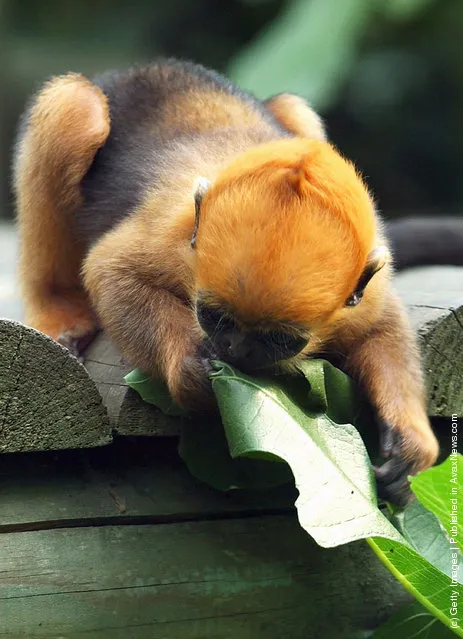
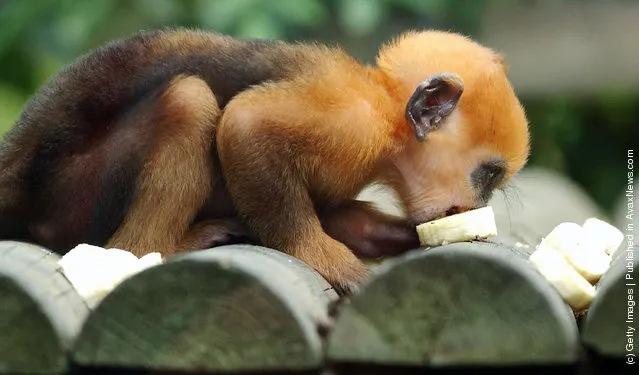
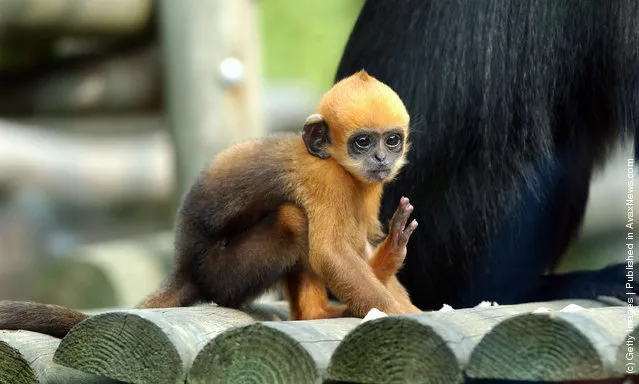
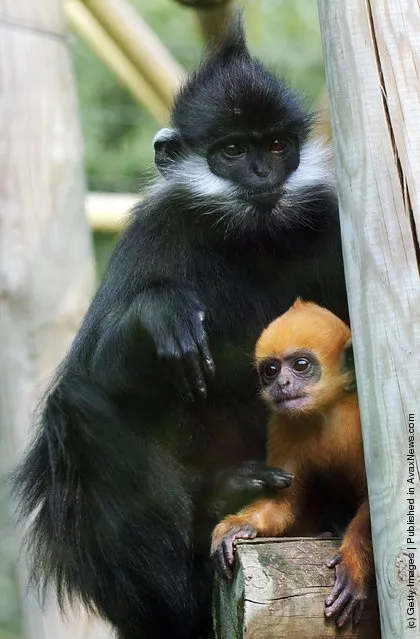
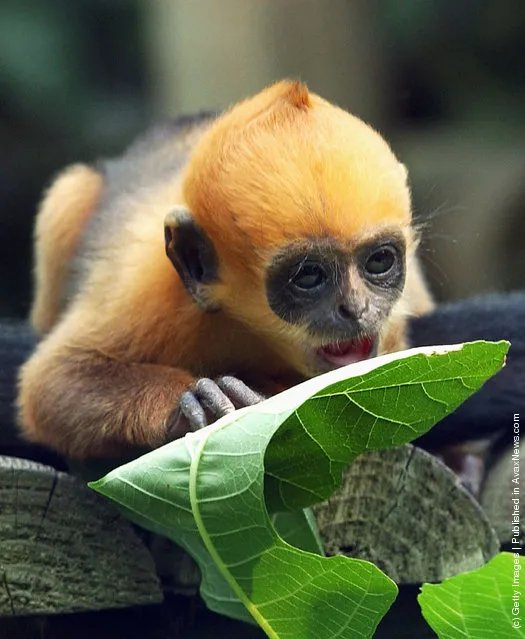
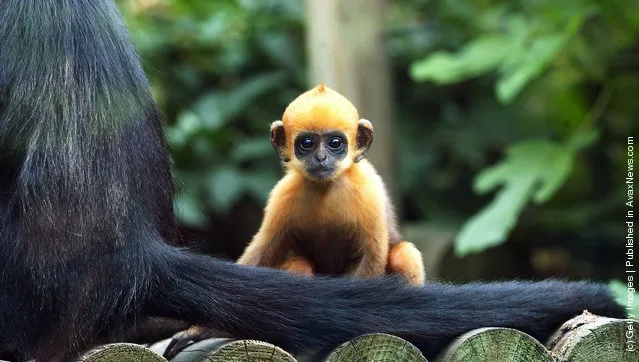
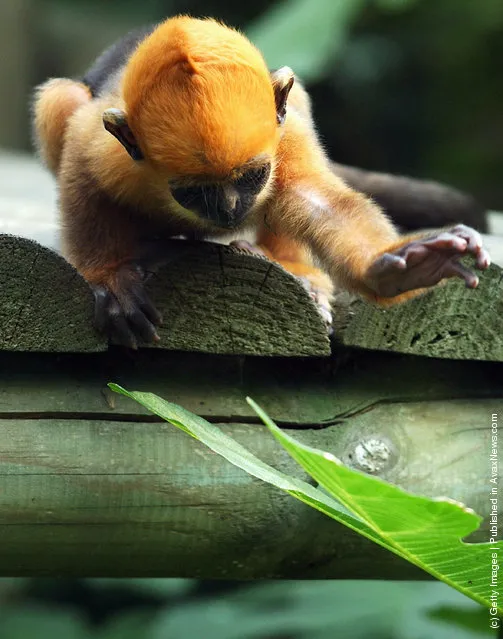
An endangered baby Francois' Langur monkey called Laa Laa settles in following her July 6 birth at London Zoo, Regent's Park on August 5, 2004 in London. The bright ginger youngster was born to glossy black parents Max and Shaneka and has the typical orange baby coat which is in stark contrast against the black of her parent's and older brother Grub's fur. (Photo by Steve Finn/Getty Images)
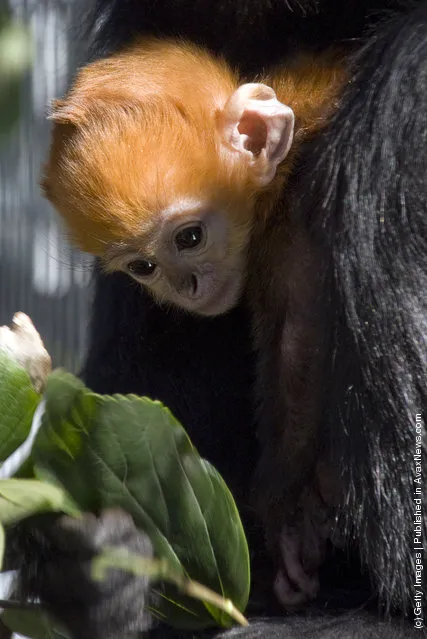
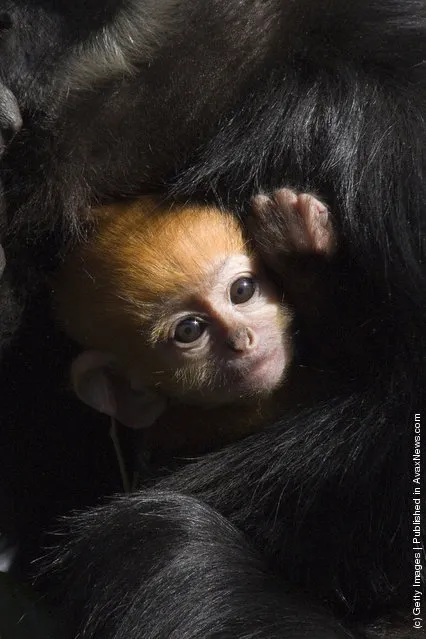
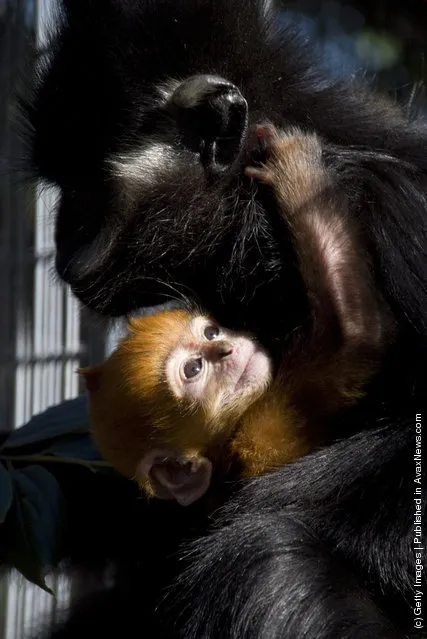
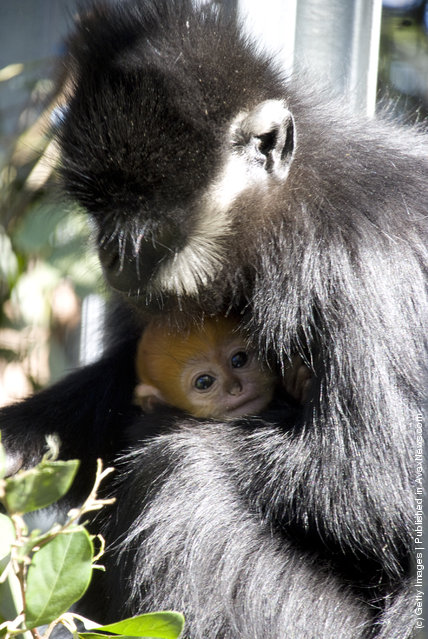
Taronga Zoo's new addition, an infant male endangered Francois Langur named Gan Ju, clings to his mother Saigon at Taronga Zoo on May 7, 2010 in Sydney, Australia. Gan Ju is the first male Langur, or Leaf-Eating Monkey, to be born in Australia and the first to be raised by its mother. According to Taronga Zoo, a recent census showed there may be as few as 1000 Francois Langurs in the wild as a result of loss of habitat and poaching despite once being wide-spread in their native Vietnam and China. (Lorinda Taylor/Taronga Zoo via Getty Images)
22 Sep 2011 11:28:00,
post received
0 comments
